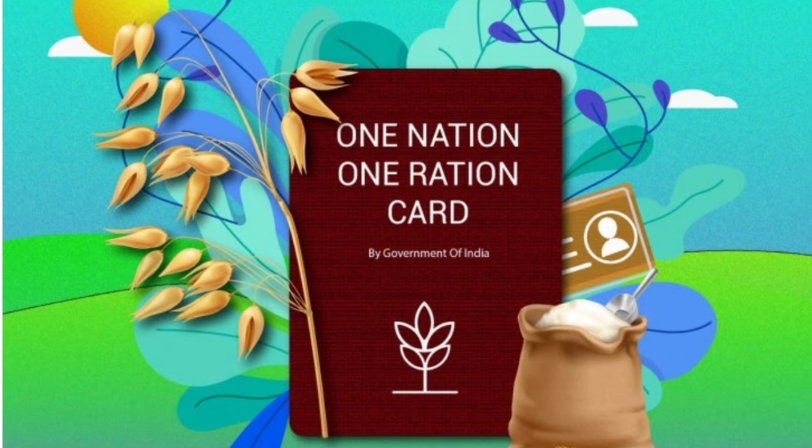What is the One Nation One Ration Card scheme?
The scheme will allow the portability of food security benefits. This means poor migrant workers will be able to buy subsidized rice and wheat from any ration shop in the country.
Highlights of the scheme
- The poor migrant workers will be able to buy subsidized rice and wheat from any ration shop in the country but for that, their ration cards must be linked to Aadhaar.
- Migrants would only be eligible for the subsidies supported by the Centre, which include rice sold at Rs. 3/kg and wheat at Rs. 2/kg, it would not include subsidies given by their respective state government in some other state.
- This scheme will ensure that no poor person is deprived of subsidized grains.
- The scheme can be implemented as already 77% of the ration shops across the country have PoS machines and more than 85% of people covered under the National Food Security Act (NFSA) have their cards linked to Aadhaar.
- For remaining beneficiaries, all the States have been given one more year to use point of sale (PoS) machines in the ration shops and implement the scheme.
- The new system, based on a technological solution, will identify a beneficiary through biometric authentication on electronic Point of Sale (ePoS) devices installed at the FPSs, and enable that person to purchase the quantity of foodgrains to which she is entitled under the NFSA.
- The Annavitran portal enables a migrant worker or his family to avail the benefits of PDS outside their district but within their state.
- While a person can buy her share of food grains as per her entitlement under the NFSA, wherever she is based, the rest of her family members can purchase subsidized food grains from their ration dealer back home.
Significance of Scheme
For migrant laborers:
- India has had food security benefit schemes that have domicile-based access.
- 36 crore people or 37% of the population are migrant labourers. The scheme is therefore important for anyone who is going to move from one place to the other.
- It happens that when one moves from one place to the other (e.g. a government employee being transferred from one place to another), it takes about two to three months to get a ration card at that next place and then furthermore time to start getting commodities against the same.
- After the implementation of the scheme, it would be ensured that a migrant is able to access the benefits which are due to him in any part of the country.
- This would be ensured based on Aadhaar authentication and validated data.
For Women:
- ONORC will be particularly beneficial for women and other disadvantaged groups, given how social identity (caste, class, and gender) and other contextual factors (including power relations) provide a strong backdrop in accessing PDS.
Provides Choice:
- ONORC will give the beneficiaries the opportunity to opt for the dealer of their choice. If any dealer misbehaves or misallocates, the beneficiary can switch to another FPS shop instantly.
- ONORC lets the beneficiaries choose the PDS shop that best delivers on the attributes.
Challenges
- Since the scheme is based on technology, the government may face some technical challenges during the implementation of the scheme.
- The scheme will increase the woes of the common man and, the middlemen and corrupt PDS shop owners will exploit them.
- Tamil Nadu has opposed the proposal of the Centre, saying it would result in undesirable consequences and is against federalism.
- Within some states issue of intra-state portability.
- Different states have different rates and these mismatching rates will be a big challenge.
- Few regional parties have expressed apprehensions about bearing the cost of additional ration cards. This is a matter which is to be settled between the states and the Government of India.
- One of the apprehensions mentioned by a few states is the cost of additional food grain to be supplied to the migrant workers.
- However, the whole system is based on the entitlements mandated under the NFSA and this prevents the charges of additional cost. Beneficiaries will continue to pay the same issue prices that are fixed under the NFSA.
- The quality of services is markedly inferior for the subaltern groups with latent methods of discrimination such as lack of information, mixing of inferior grains, longer waiting time, and, at times, even verbal abuse.
Related Links:


